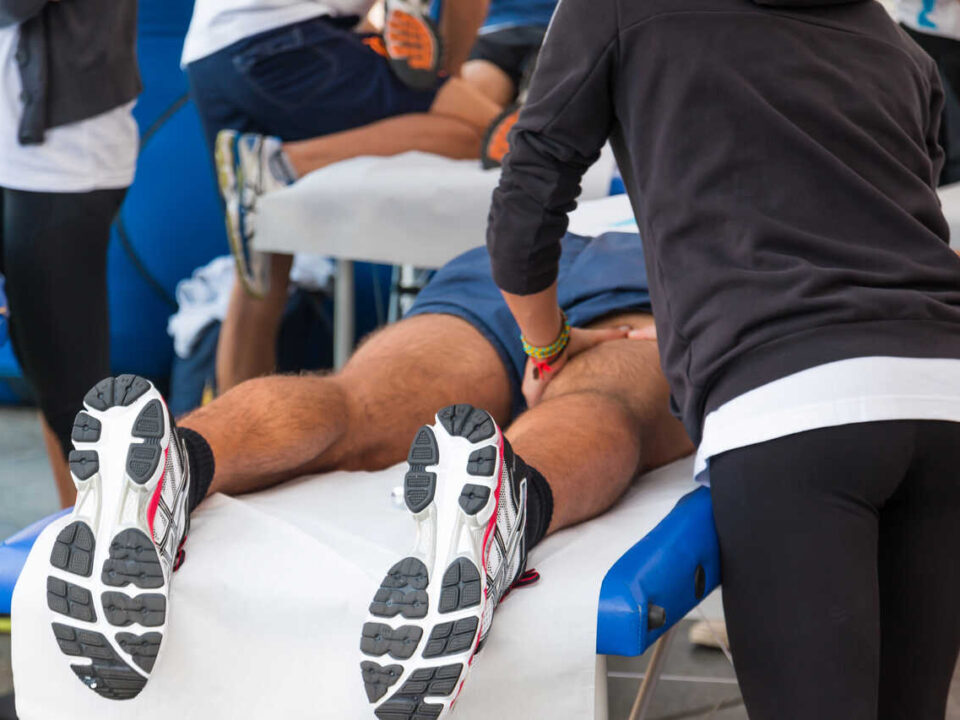
Rejuvenate Your Senses: Exploring the Wonders of Swedish Massage Therapy
July 18, 2024
Easing Aches and Enhancing Well-Being: The Power of Massage Therapy for Seniors
July 18, 2024Understanding Carpal Tunnel Syndrome
What is Carpal Tunnel Syndrome?
Carpal Tunnel Syndrome (CTS) is a condition that affects the wrist and hand. It occurs when the median nerve, which runs from your forearm into the palm of your hand, becomes compressed at the wrist. This nerve passes through the carpal tunnel, a narrow passageway in the wrist made up of bones and ligaments. When the tunnel becomes narrowed or when tissues surrounding the flexor tendons swell, they put pressure on the median nerve, leading to the symptoms of CTS.
Symptoms and Causes of Carpal Tunnel Syndrome
CTS manifests through a variety of symptoms, often starting gradually and worsening over time. Recognizing these symptoms early can help in managing the condition more effectively.
| Symptom | Description |
|---|---|
| Numbness | Loss of sensation in the fingers or hand, especially the thumb, index, middle, and ring fingers. |
| Tingling | A pins-and-needles sensation that often extends up the arm. |
| Weakness | Difficulty gripping or holding objects, and a tendency to drop things. |
| Pain | Discomfort or pain in the wrist or palm, which can extend to the forearm. |
The causes of CTS can vary, but several factors may contribute to the development of this condition:
- Repetitive Hand Movements: Tasks that involve repetitive wrist and hand motions, such as typing, can lead to CTS.
- Wrist Position: Activities that involve prolonged bending of the wrist can compress the median nerve.
- Medical Conditions: Conditions such as diabetes, rheumatoid arthritis, and thyroid gland imbalance can increase the risk.
- Pregnancy: Hormonal changes during pregnancy can cause swelling and increase the likelihood of developing CTS.
- Genetics: A smaller carpal tunnel can run in families, making individuals more susceptible.
Understanding the symptoms and causes of CTS is vital for seeking appropriate treatment, such as massage therapy for carpal tunnel syndrome. Massage therapy can offer significant relief by targeting the affected areas and alleviating pressure on the median nerve. For more information on the benefits of different massage techniques, visit our articles on types of massage therapy and massage therapy benefits.
How Massage Therapy Can Help
Massage therapy can be a valuable tool in managing and alleviating the symptoms of Carpal Tunnel Syndrome (CTS). By targeting the specific areas affected by CTS, massage can provide relief and promote healing.
Benefits of Massage Therapy for Carpal Tunnel Syndrome
Massage therapy offers several benefits for individuals dealing with Carpal Tunnel Syndrome. These include:
- Pain Relief: By manipulating the soft tissues, massage can help reduce pain and discomfort in the wrist and hand.
- Improved Circulation: Massage enhances blood flow to the affected area, promoting healing and reducing inflammation.
- Increased Flexibility: Regular massage can help improve the flexibility and range of motion in the wrist and fingers.
- Reduced Muscle Tension: Massage helps to relax the muscles and tendons around the carpal tunnel, reducing pressure on the median nerve.
- Enhanced Nerve Function: By reducing pressure on the median nerve, massage can help improve nerve function and alleviate symptoms like tingling and numbness.
| Benefit | Description |
|---|---|
| Pain Relief | Reduces pain and discomfort in the wrist and hand |
| Improved Circulation | Enhances blood flow, promoting healing |
| Increased Flexibility | Improves range of motion in the wrist and fingers |
| Reduced Muscle Tension | Relaxes muscles and tendons around the carpal tunnel |
| Enhanced Nerve Function | Improves nerve function, reducing symptoms like tingling and numbness |
For more information on the benefits of massage therapy, visit our page on massage therapy benefits.
Types of Massage Techniques for Carpal Tunnel Syndrome
Various massage techniques can be effective in alleviating the symptoms of Carpal Tunnel Syndrome. Some of the most commonly used techniques include:
- Swedish Massage: This technique involves long, gliding strokes and gentle kneading to relax the muscles and improve circulation. It is often used for overall relaxation and stress relief. More details can be found on Swedish massage therapy.
- Deep Tissue Massage: This technique targets the deeper layers of muscles and connective tissues. It can be particularly effective for relieving chronic muscle tension and reducing inflammation. Learn more about deep tissue massage therapy.
- Trigger Point Therapy: This technique focuses on specific trigger points or knots in the muscles. By applying pressure to these points, the therapist can help release tension and alleviate pain. More information is available on trigger point therapy massage.
- Friction Massage: This involves applying deep pressure using circular or transverse movements to break down adhesions and improve flexibility in the wrist and hand.
| Technique | Description |
|---|---|
| Swedish Massage | Long, gliding strokes and gentle kneading for relaxation |
| Deep Tissue Massage | Targets deeper muscle layers, relieves chronic tension |
| Trigger Point Therapy | Focuses on specific trigger points to release tension |
| Friction Massage | Deep pressure movements to improve flexibility |
By incorporating these massage techniques into your therapy routine, you can effectively manage the symptoms of Carpal Tunnel Syndrome and improve your overall hand and wrist function. For more on different techniques, visit our page on massage therapy techniques.
Finding Relief Through Massage
Working with a Massage Therapist
When dealing with carpal tunnel syndrome (CTS), working with a professional massage therapist can provide significant relief. A skilled therapist can tailor their techniques to address the specific needs of your condition, helping to reduce pain and improve function.
- Initial Assessment: Your therapist will begin with an initial assessment to understand your symptoms and medical history. This helps them identify the most effective treatment plan for you.
- Customized Treatment Plan: Based on the assessment, the therapist will create a customized treatment plan. This plan may include various massage therapy techniques such as deep tissue massage, trigger point therapy, and Swedish massage.
- Focus Areas: The therapist will focus on areas that contribute to your CTS symptoms, such as the forearm, wrist, and hand. They may also work on the neck and shoulders to ensure comprehensive relief.
- Ongoing Evaluation: Progress will be monitored, and adjustments to the treatment plan will be made as needed to ensure optimal results.
Frequency and Duration of Massage Sessions
The frequency and duration of massage sessions for carpal tunnel syndrome can vary based on the severity of your symptoms and your individual response to therapy. Below is a general guideline to help you understand what to expect.
| Severity Level | Frequency | Duration per Session |
|---|---|---|
| Mild | Once a week | 30-45 minutes |
| Moderate | 2-3 times a week | 45-60 minutes |
| Severe | 3-4 times a week | 60-75 minutes |
- Mild Symptoms: For mild symptoms, a weekly session lasting 30-45 minutes may be sufficient. This helps maintain muscle flexibility and reduce mild discomfort.
- Moderate Symptoms: If your symptoms are moderate, 2-3 sessions per week, each lasting 45-60 minutes, can be more effective in managing pain and improving mobility.
- Severe Symptoms: For severe cases, 3-4 sessions per week, each lasting 60-75 minutes, may be necessary initially. As symptoms improve, the frequency can be gradually reduced.
Regular sessions with a massage therapist can be complemented with self-care practices such as stretching exercises and ergonomic adjustments. These practices enhance the benefits of massage therapy and contribute to long-term relief from carpal tunnel syndrome.
For more information on different types of therapeutic massages that can aid in your treatment, explore our articles on therapeutic massage therapy and deep tissue massage therapy.
Self-Care Techniques
In addition to professional massage therapy, incorporating self-care techniques can significantly aid in managing Carpal Tunnel Syndrome. This section explores effective stretching exercises and ergonomic adjustments that you can implement in your daily routine.
Stretching Exercises for Carpal Tunnel Relief
Stretching exercises can help alleviate the discomfort associated with Carpal Tunnel Syndrome by promoting flexibility and reducing tension in your wrist and hand. Here are a few simple exercises you can perform regularly:
- Wrist Flexor Stretch:
- Extend your arm straight out with your palm facing up.
- Use your other hand to gently pull your fingers back towards your body.
- Hold for 15-30 seconds and repeat on the other hand.
- Wrist Extensor Stretch:
- Extend your arm straight out with your palm facing down.
- Use your other hand to gently push your fingers down and towards your body.
- Hold for 15-30 seconds and repeat on the other hand.
- Median Nerve Glide:
- Start with your arm at a 90-degree angle and your palm facing down.
- Slowly straighten your arm while extending your fingers and tilting your wrist back.
- Hold for a few seconds, then return to the starting position.
- Thumb Stretch:
- Extend your fingers and thumb wide apart.
- Use your other hand to gently pull your thumb backward.
- Hold for 15-30 seconds and repeat on the other hand.
| Exercise | Duration (seconds) | Repetitions |
|---|---|---|
| Wrist Flexor Stretch | 15-30 | 2-3 per hand |
| Wrist Extensor Stretch | 15-30 | 2-3 per hand |
| Median Nerve Glide | 5-10 | 3-5 |
| Thumb Stretch | 15-30 | 2-3 per hand |
For more detailed tips on stretching exercises, consult our related articles.
Ergonomic Adjustments for Everyday Activities
Making ergonomic adjustments can significantly reduce the strain on your wrists, helping to manage and prevent Carpal Tunnel Syndrome. Here are some recommendations:
- Keyboard and Mouse Position:
- Ensure that your keyboard is at elbow height.
- Keep your wrists straight and avoid resting them on hard surfaces.
- Use an ergonomic mouse that fits comfortably in your hand.
- Workstation Setup:
- Adjust your chair so that your feet are flat on the floor and your knees are at a 90-degree angle.
- Position your monitor at eye level to prevent neck strain.
- Use a document holder to keep important papers at eye level, reducing the need to look down frequently.
- Breaks and Movements:
- Take regular breaks to stretch and move your hands and wrists.
- Perform wrist circles and finger stretches periodically throughout the day.
- Use a stress ball or hand exerciser to maintain hand strength and flexibility.
- Tool Usage:
- Use ergonomically designed tools that fit your hand comfortably.
- Avoid gripping tools too tightly.
- Alternate hands frequently to distribute the workload evenly.
Implementing these ergonomic adjustments can greatly enhance your comfort and efficiency, reducing the risk of Carpal Tunnel Syndrome. For more information on ergonomic practices, explore our other articles.
Complementary Therapies
Heat and Cold Therapy
Heat and cold therapy can be effective complementary treatments for managing carpal tunnel syndrome. The application of heat helps to relax muscles and increase blood flow, which can reduce pain and stiffness. Cold therapy, on the other hand, can help to reduce inflammation and numb the area, providing temporary relief from pain.
Heat Therapy Benefits
- Relaxes muscles
- Increases blood circulation
- Reduces joint stiffness
Cold Therapy Benefits
- Reduces inflammation
- Numbs pain
- Decreases swelling
| Therapy Type | Benefits |
|---|---|
| Heat Therapy | Relaxed muscles, increased blood flow, reduced stiffness |
| Cold Therapy | Reduced inflammation, numbed pain, decreased swelling |
For best results, alternate between heat and cold therapy. Apply heat for 15-20 minutes, followed by a cold compress for 10-15 minutes. Always use a barrier, such as a cloth, to protect your skin from direct contact with the heat or cold source. For more information on massage therapy techniques, visit our dedicated article.
Acupuncture and Acupressure for Relief
Acupuncture and acupressure are traditional Chinese medicine techniques that can provide relief from carpal tunnel syndrome. Acupuncture involves the insertion of thin needles into specific points on the body to balance energy flow, while acupressure uses manual pressure on these points.
Acupuncture Benefits
- Balances energy flow
- Reduces pain and inflammation
- Enhances overall well-being
Acupressure Benefits
- Relieves pain
- Reduces muscle tension
- Improves circulation
| Therapy Type | Benefits |
|---|---|
| Acupuncture | Balanced energy flow, pain reduction, inflammation reduction |
| Acupressure | Pain relief, muscle tension reduction, improved circulation |
Both acupuncture and acupressure can be used as part of a holistic approach to managing carpal tunnel syndrome. These therapies can complement therapeutic massage therapy and other treatments to provide comprehensive relief. For more insights on massage therapy benefits, explore our detailed guide.
By incorporating these complementary therapies into your wellness routine, you can enhance the effectiveness of massage therapy for carpal tunnel syndrome. Always consult with a healthcare professional before starting any new treatment to ensure it is appropriate for your condition.
Incorporating Massage Therapy into Your Wellness Routine
Long-Term Management of Carpal Tunnel Syndrome
Long-term management of carpal tunnel syndrome is crucial for maintaining your hand and wrist health. Incorporating massage therapy into your routine can provide sustained relief and prevent the recurrence of symptoms.
Regular massage sessions can help maintain flexibility and reduce tension in the muscles and tendons surrounding the carpal tunnel. Working with a qualified massage therapist who specializes in therapeutic massage therapy can ensure that you receive targeted treatment tailored to your needs.
| Frequency of Sessions | Duration per Session | Benefits |
|---|---|---|
| Weekly | 30 minutes | Reduces acute symptoms |
| Bi-weekly | 45 minutes | Maintains flexibility and prevents flare-ups |
| Monthly | 60 minutes | Supports long-term management and overall wellness |
In addition to professional massage therapy, you can also incorporate self-massage techniques to complement your sessions. Using a foam roller or massage ball can help alleviate tension in the wrist and forearm muscles.
Creating a Holistic Approach to Healing
Creating a holistic approach to healing involves integrating various therapies and lifestyle changes to support your overall well-being. Massage therapy is a key component of this approach, but it should be complemented by other practices to maximize its benefits.
Incorporate stretching exercises into your daily routine to keep your muscles flexible. Simple stretches can help relieve tension and improve blood flow to the affected area. For effective exercises, refer to our article on stretching exercises for carpal tunnel relief.
Making ergonomic adjustments to your workspace can also significantly impact your recovery. Ensure that your desk, chair, and computer setup promote proper wrist alignment and reduce strain. For tips on making ergonomic changes, visit our article on ergonomic adjustments for everyday activities.
In addition to massage therapy, consider incorporating other complementary therapies such as heat and cold therapy, acupuncture and acupressure, and mindfulness practices like yoga or meditation. These therapies can work together to enhance your overall wellness and provide comprehensive relief from carpal tunnel syndrome.
By integrating massage therapy with other self-care practices and complementary therapies, you can create a holistic approach to managing and potentially alleviating carpal tunnel syndrome. This well-rounded strategy can help you achieve long-term relief and improve your quality of life.






